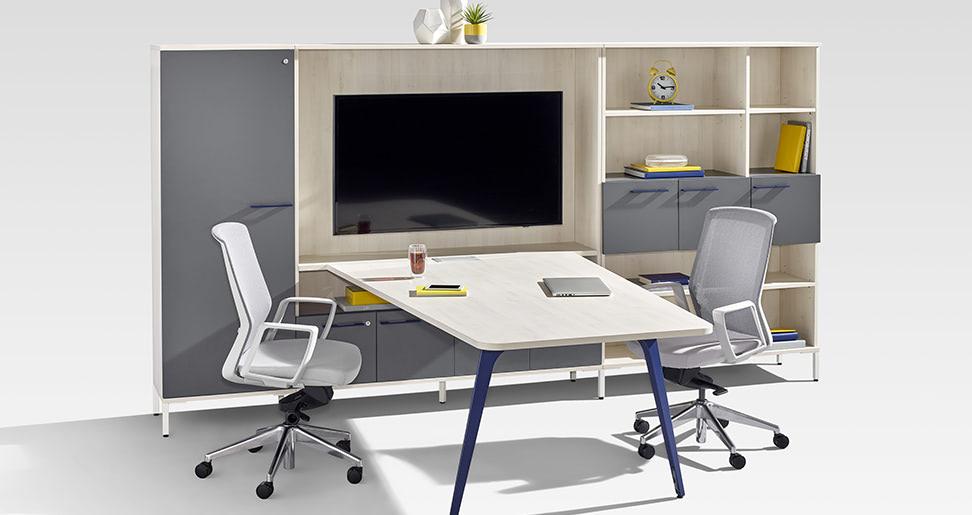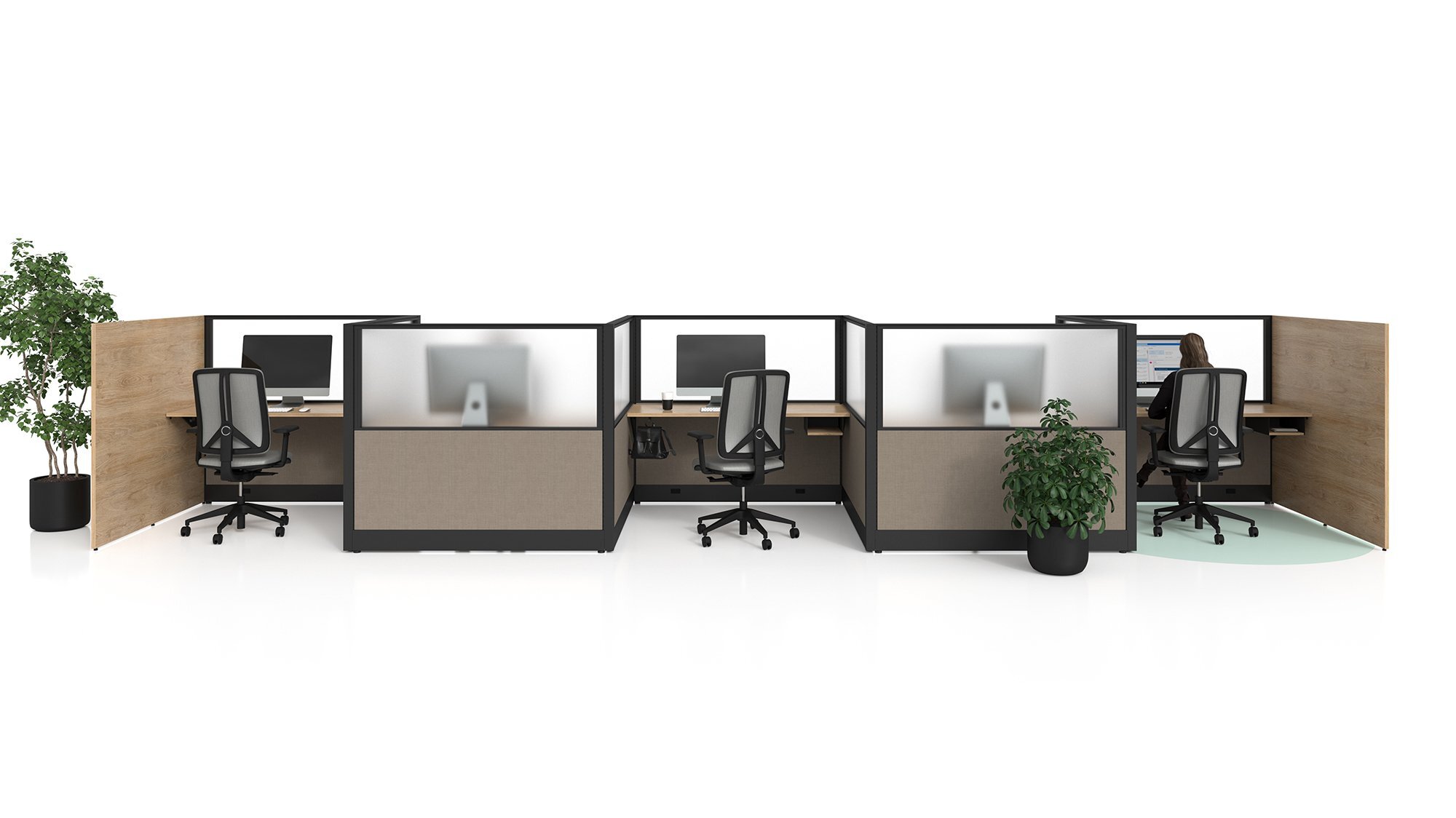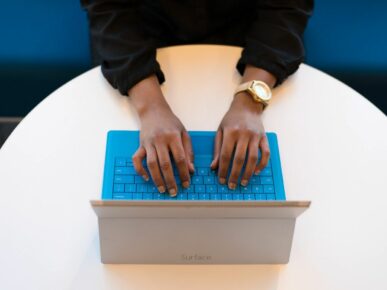4 ways office design is changing post Covid-19
Subscribe
Join us as we explore industry trends, best practices, and highlight stunning office transformations.
COVID-19 has upended every area of our lives, and it doesn’t stop at office design. Odds are that your office design is not currently equipped to handle the aftermath of the pandemic, but that doesn’t mean you have to close up shop. Here are 4 ways office design has changed, and how you can incorporate these changes seamlessly into your office space.
Open workspaces aren’t dead
Prior to the pandemic, many offices underwent major renovations to create an open, team-based environment to promote efficiency and communication. Does that sound familiar to you? Before you throw out the open floor plan and put four walled offices everywhere, we’ve got some good news for you: open workspaces aren’t dead, they just need to undergo a few tweaks.
One reason why open workspaces aren’t going anywhere is because they are easier to clean. There are less surfaces for employees to touch like door handles or desks, but the main problem is that everyone is in one room which makes social distancing more difficult.
Some easy ways to make your open workspace more functional post pandemic is to allow for 6 feet or more between desks or install counter shields on each desk to avoid excessive face to face interactions. Temporary walls are also an excellent way to reduce crowded areas. It may seem counterintuitive to create a smaller gathering space, but it limits the amount of contact between people, while still allowing employees to work together.

Focus on health and wellness
While it probably goes without saying, offices will now have a heightened focus on health and wellness. Every surface in the office will need to be easily cleaned and sanitized. For furniture, you’ll want to focus on non-porous, lightweight furniture that is safe to clean with bleach. Couches and fabric chairs aren’t out of the question, just ensure that they are a microfiber fabric. Microfiber is known for being able to handle wear and tear and can be easily cleaned with rubbing alcohol or dishwashing soap and a damp cloth.
Touchless technology will now become the new standard. It greatly reduces the number of surfaces that require physical touch (which means less cleaning!). This includes touchless faucets, automated doors, motion lights and sensors, or even appliances that can be controlled from a smartphone.
The need for better ventilation systems for indoor spaces has also become prevalent. While upgrading your current ventilation system is a good start, it’s not enough. When you upgrade your office, focus on access to the outdoors and increased airflow. This could be as simple as strategically placing indoor fans or updating your windows to allow them to open and close when weather permits. Even a slightly open window can increase airflow and oxygenation in the office!

Biophilic design is back and here to stay
If an outdoor space isn’t possible, what about bringing the outdoors...in? Biophilic design promotes a healthy and productive environment by bringing employees closer to nature. It’s been shown to boost productivity, improve overall well-being, reduce stress, and decrease fatigue.
Biophilic design isn’t just putting a few plants out and calling it a day. It’s about incorporating natural materials like wood, water, and vegetation as an integral part of the office environment. Things like “living” walls or even just increased access to natural light are simple ways to add biophilic design into the workplace.
No footprint, no problem
Open workspace or not, you’ll have to limit the amount of employees that can be at the office at one time. The good news is that for many companies, the pandemic has shown us that not all work needs to be done in a physical office space. While some employees may be eager to jump right back into office life, others may feel just as, or more productive, while working at home. Implementing a hybrid work model may make it easier to redesign your office space and keep it safe for your employees.
The moral of the story is to design for flexibility and embrace the change ahead. The pandemic has changed the way we work forever and while the new normal may be different, it’s not all bad. Offices are now prioritizing public health and safety in a way that they haven't before, and that’s a good thing.
